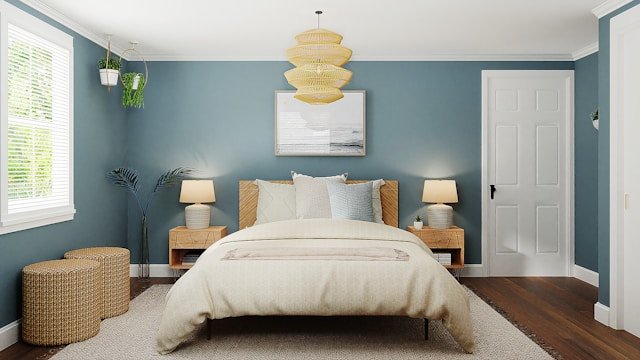Terrarium Plants With Low Maintenance
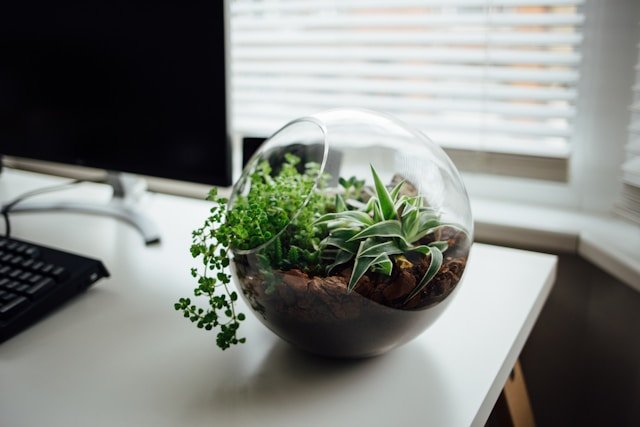
Terrarium plants are the best choice if you are enthusiastic about gardening and want to add greenery to your concrete world. The terrarium is a mini garden in a glass jar. In other words, you can store the beauty of nature in a mini glass jar. Isn’t that great? You can use cacti, succulents, or tropical plants as terrarium plants. It looks so lovely and is perfect for a tabletop.
It is okay to need clarification about picking the right plants to try this for the first time. Here you can learn anything and everything you need to know about terrarium plants. Also, we are providing some low-maintenance terrarium plants that will be perfect for beginners.
What is a Terrarium Plant:
Terrarium plants are diverse, sluggish-growing plants in a glass utensil. You can use terrarium plants like air plants, succulents, cacti, jade plants, etc. These plants are perfect if you want to live in the surrounding greenery, but are also incapable of caring for your plants. The most beneficial part is that these plants can thrive with low maintenance or less water. Just make sure minimal sunlight for them will be enough to survive. They can give your space a delightful look and are also perfect for a tabletop. You can use it as an indoor plant or office plant. With minimum maintenance, they can thrive for years.
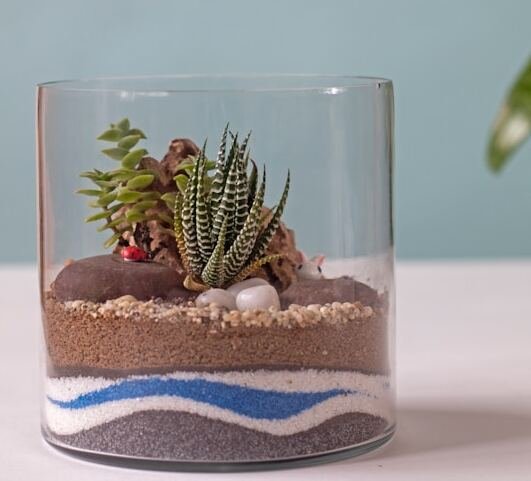
1 Artillery Fern(pilea microphylla):
- Artillery Fern is from the pilea family.
- This plant is easy to manage and requires medium-to-bright partial sunlight.
- It prefers moist soil, watering when the soil gets dry.
- No serious pests are typically present on the plant, but mastication insects might occasionally bother it.
- You can use the plant in a closed terrarium.

2 Nerve Plants (Fittonia):
- Fittonia is a good ground cover because it can quickly spread without effort.
- This plant doesn’t require much water.
- Can grow 10–15 cm (4–6 in) tall.
- The flower color is white to off-white.
- A moist area with portable sunlight is best for them.
- Its marvelous look can add value to your space and easily thrive as a closed terrarium plant.
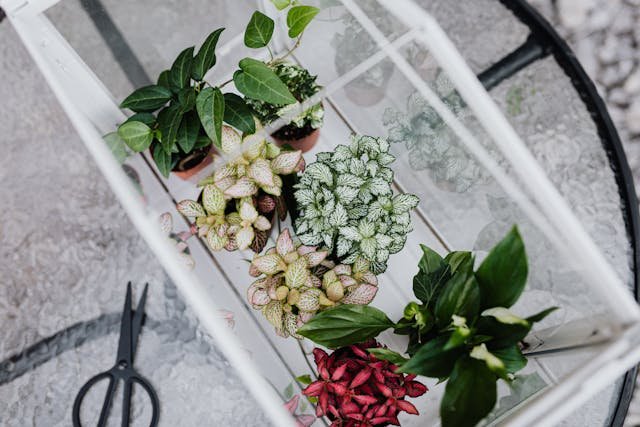
3 Air plants (Tillandsia):
- If you can’t grow any plants, this plant is for you. They don’t even need the soil to thrive.
- Air plants consume water and nutrients through their leaves.
- They can’t tolerate direct sunlight; simply place them in bright indirect sunlight.
- These plants have outstanding aesthetic value and give your space a stunning appearance.
Tip: It will look good in an open hanging terrarium.
This plant can purify the air naturally.
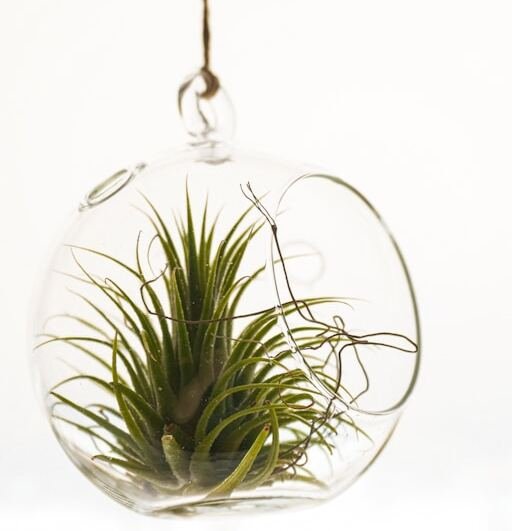
4 Moon Valley Friendship Plant:
- It prefers a humid environment, suitable for indirect bright light, but cannot tolerate direct sunlight.
- Water once or twice a week when the soil starts to dry. Try to keep the soil moist.
- Moon Valley plants can Retain their diminutive size and rarely reach a height of 12 inches.

5 Aluminum Plant (Pilea Cadierei):
- Direct sun exposure can burn its leaves, so you should keep this plant in bright indirect sunlight.
- This plant prefers soil with good drainage—water when the top 1/2 inch gets dry.
- You can keep them in a closed terrarium because they desire a humid environment.
Warning: This plant might be toxic to pets like cats and dogs.
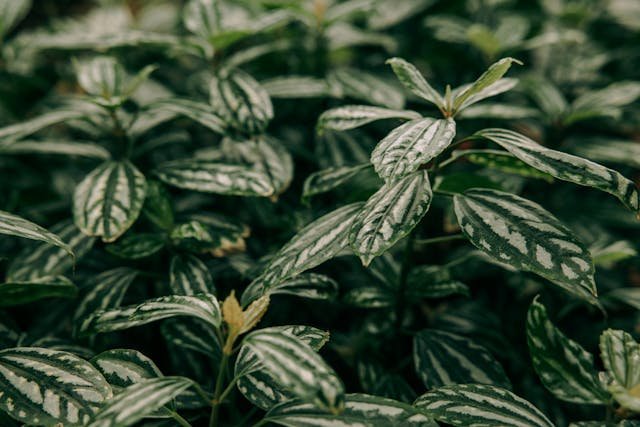
6 Polka Dot Plant( Hypoestes Phyllostachya):
- Due to the variety of its colors, including pink, red, and silver, this is a gorgeous indoor plant.
- It prefers bright indirect sunlight.
- Need water regularly during summer and spring.
- A closed terrarium is best for them.
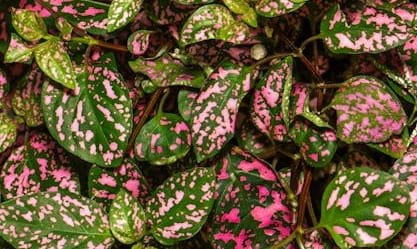
7 Syngonium:
- Although it can tolerate low light, this plant prefers bright indirect sunlight. Direct sunlight can advantage them in the morning, but intense sunlight can harm their leaves.
- This plant thrives in soil rich in nutrients and good drainage.
- Syngonium just loves a humid environment. It is suitable for a closed terrarium.
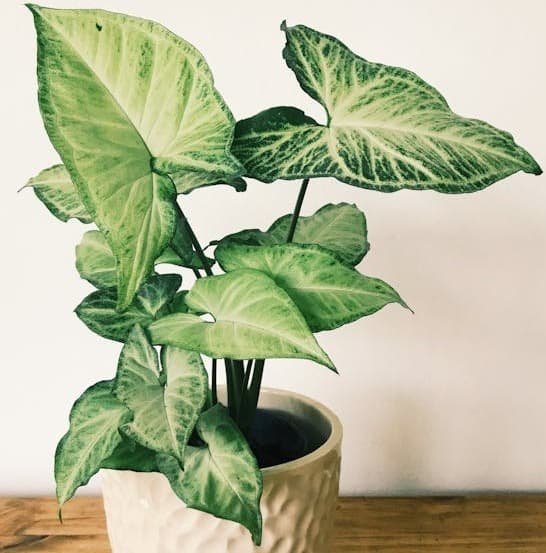
8 Prayer Plant(Maranta Leuconeura):
- It favors partial sun.
- The soil should be evenly drained and moist.
- Six to twelve inches high.
- The ideal soil for them is acidic.
- The best environment for thriving is a humid one
- You can keep this plant in a closed terrarium.
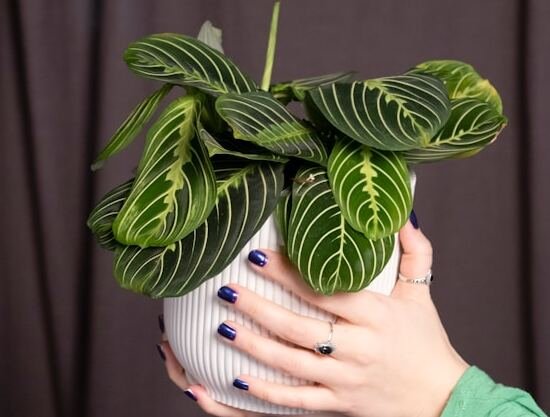
9 Pothos(Epipremnum Aureum):
- Pothos plants can thrive in bright and indirect light, but intensive direct sunlight can burn their leaves.
- Water when the soil is dry. Do not overwater.
- Pothos can survive in regular or dry atmospheres, but you can elevate humidity levels to make them more at ease.
- This plant looks fantastic in a closed terrarium.
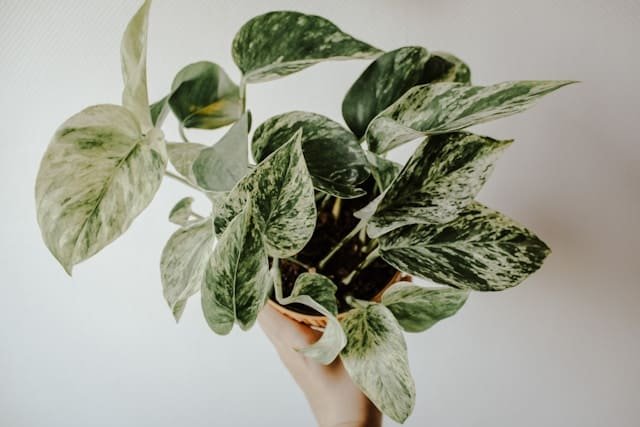
10 Cacti:
- You can quickly get a spectacular desert landscape look in your house by bringing off cacti.
- Cacti are desert plants and should be kept in an open terrarium because they can’t survive in a humid environment.
- Watering depends on the relative humidity of the area. Apply water when the soil is dry out.

11 Peperomia Plants:
- Peperomia is usually known as the Baby rubber plant, Emerald ripper pepper, Pepper elder, and Shining bush plant.
- It can be 6-12 inches tall.
- This plant prefers medium to bright partial sunlight.
- The soil should be moist as well as well-drained but not soggy.
- Allow the soil to dry between watering.
- Peperomia are tropical plants and would like a warm, humid environment, so you can put them in a closed terrarium to create a tropical vibe.
12 Hens And Chicks(Sempervivum tectorum):
- The ideal plant to use in an open terrarium is a succulent.
- Hens and chicks are attractive, which gives your home a striking appearance.
- Succulents come in hues, including red, blue, copper leaf, and gold.
- Put them somewhere that is well-lit.
- In between waterings, let the soil dry out.
13 Creeping Fig(Ficus pumila):
- These plants are easy to grow.
- They prefer bright places with indirect sun but cannot tolerate direct sun.
- Creeping figs like to have a warm and humid environment.
- This small plant with slow growth is ideal for closed terrariums.
14 Moss
- Moss can offer a crucial authentic forest appearance to any type of terrarium.
- It is the best ground cover.
- Just keep them a little bit moist, but do not overwater.

How To Create a Terrarium At Home:
Following some steps, you can easily make your terrarium at home.
1 Select a container:
First, you need a terrarium container. You can buy a terrarium container, or if you do not want to spend, you can take any kind of transparent glass or plastic container with or without a lid, whatever is available at your house. Assure the container’s mouth is wide.
2 Choose the perfect plant:
You should choose a small plant that will fit in your container. The majority of local nurseries convey miniature terrarium plants. You can also select the right plant for your terrarium from mentioned above.
3 Drainage layers:
A terrarium doesn’t have a drainage hole. Therefore, you must add a drainage layer; otherwise, the terrarium plants’ roots will rot. You can use stones and activated charcoal to create a 2-3 inches drainage layer. Show some creativity in this step. It also can enhance the beauty of your terrarium.
4 Add moss:
Adding sheet moss, you should create a barrier between the drainage layer and the soil at this stage. The moss gives your terrarium additional aesthetic value.
5 Potting mix:
Now add the potting mix to the moss with the help of a large spoon. You can add a thick layer according to your needs, but ensure adequate space for the terrarium plants to grow.
6 Get the plants ready and place them in your terrarium:
Before placing terrarium plants, you should make a design for the terrarium. Now remove terrarium plants from their garden center vases and carefully place them into the terrarium.
7 Decorate:
Decorating my terrarium is my favorite part of all the steps. You can decorate your terrarium with decorative stones, sea shells, etc.
How to take care of a terrarium:
- To water the plants, you can use a spray bottle; just dampen them rather than drown them. A closed terrarium generally requires water between two and three weeks and an open terrarium once weekly.
- Take the lid off a closed terrarium monthly to maintain air circulation.
- If plants are too big for the container, prune them to a smaller size and remove any discolored or disrupted foliage.
- Use chopsticks and long tweezers to place the plants into the terrarium and gently tap them in if the entrance of the terrarium is not wide enough.
Warning:
- Use a paper towel or newspaper to clean the terrarium; never use dish soap inside a terrarium.
- Never apply fertilizer to your terrarium plants because they don’t need it.
